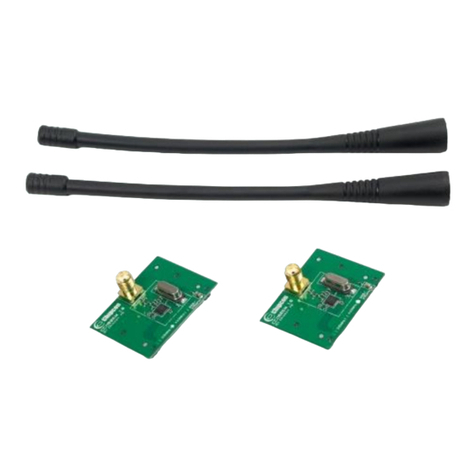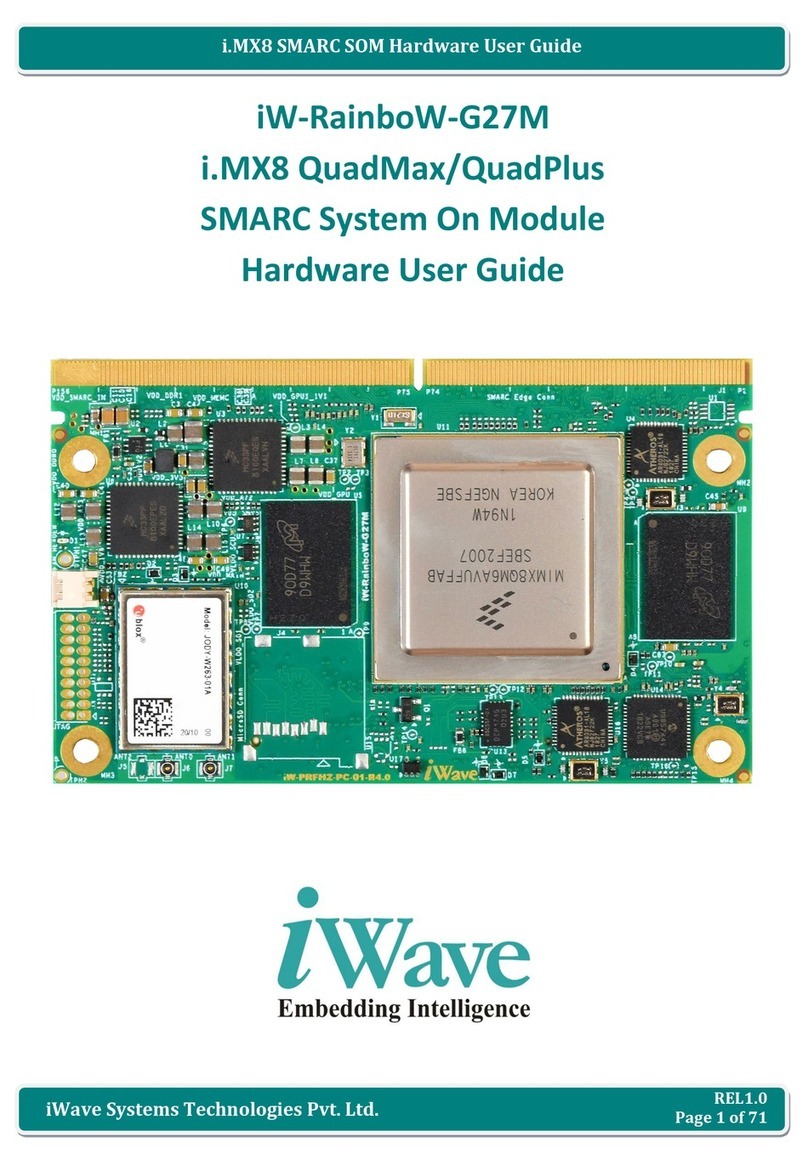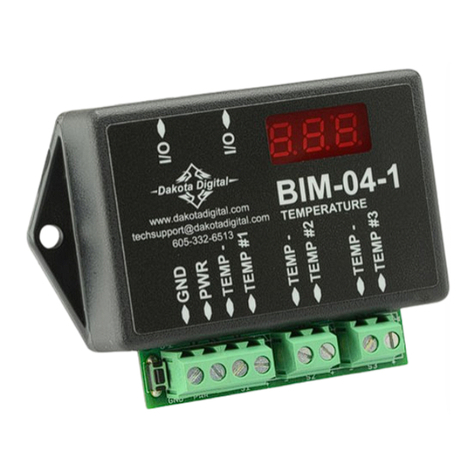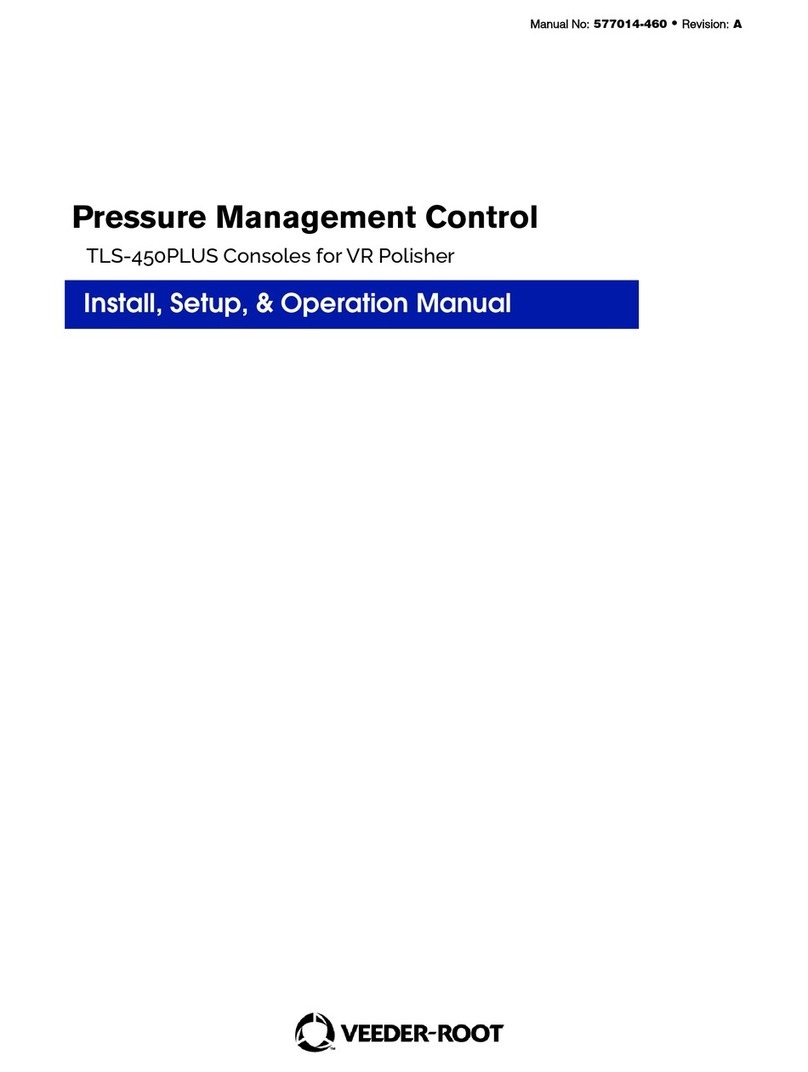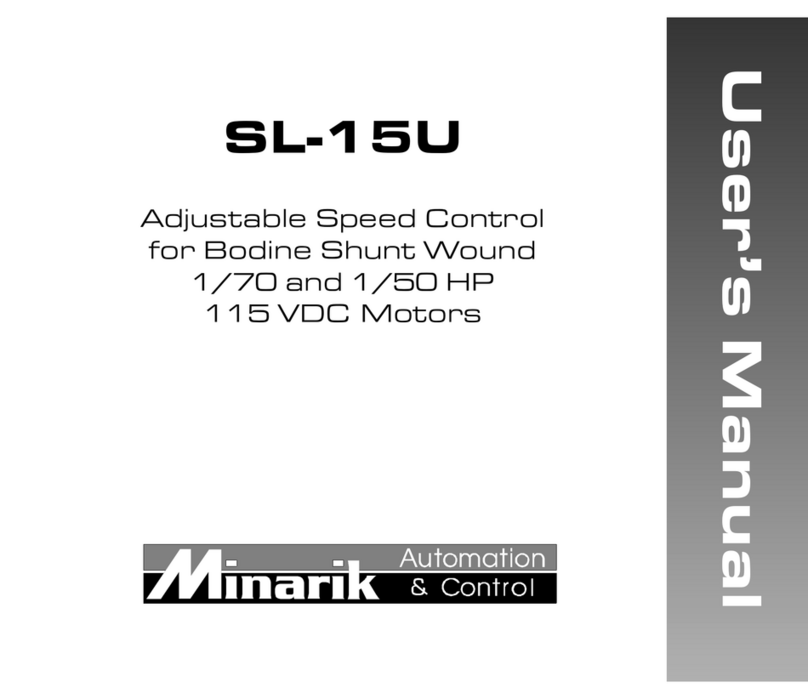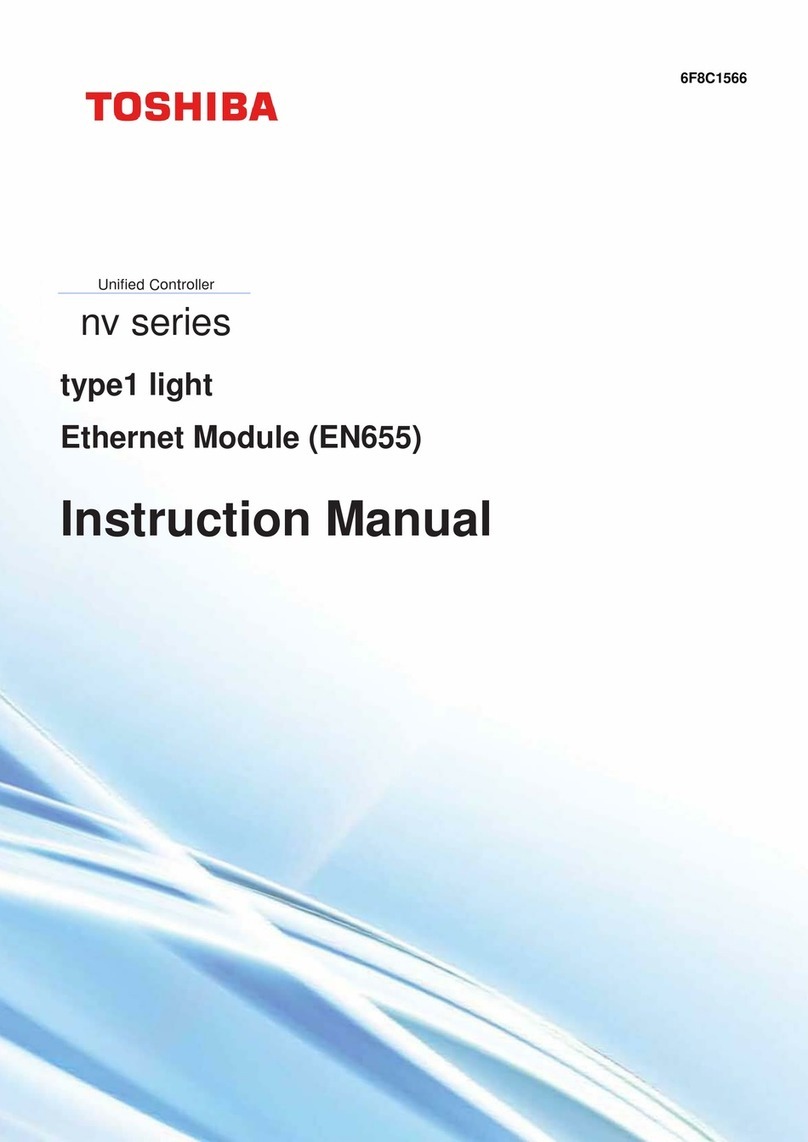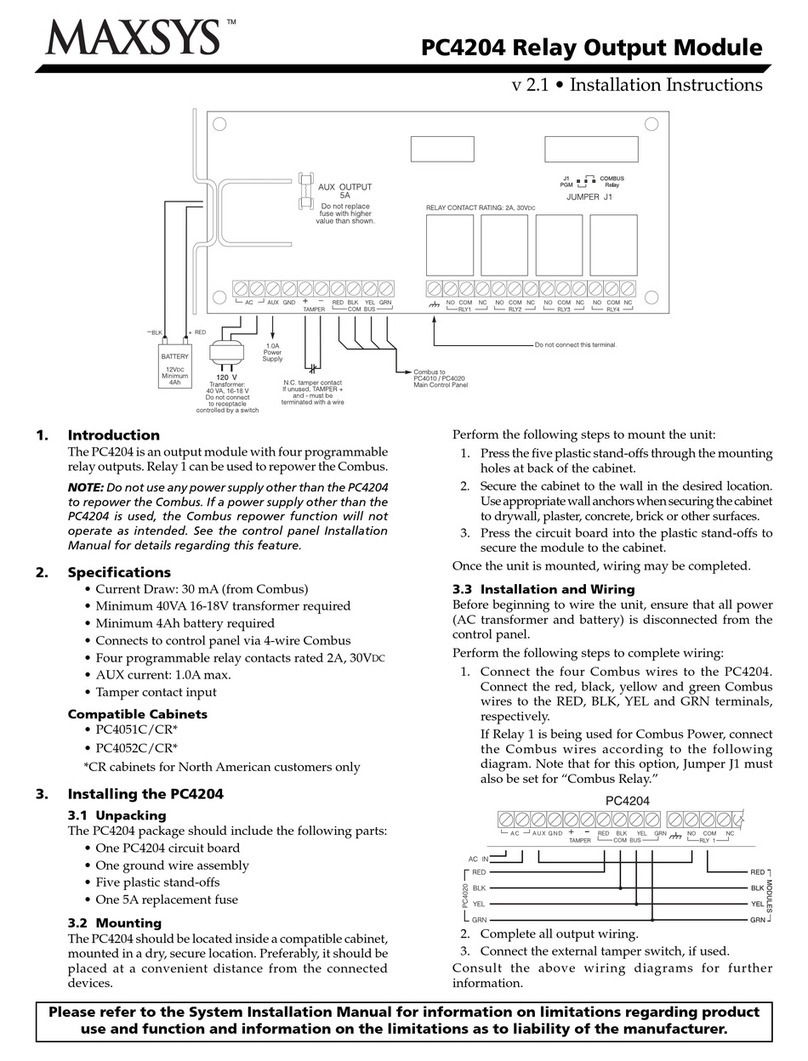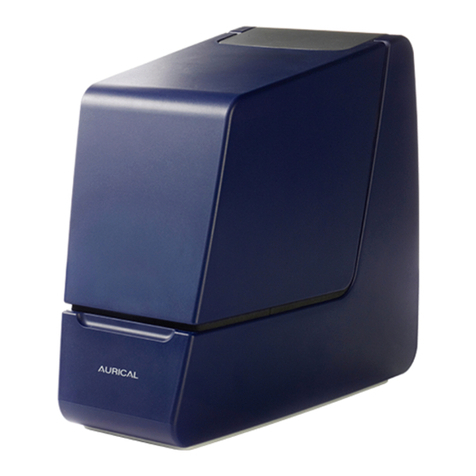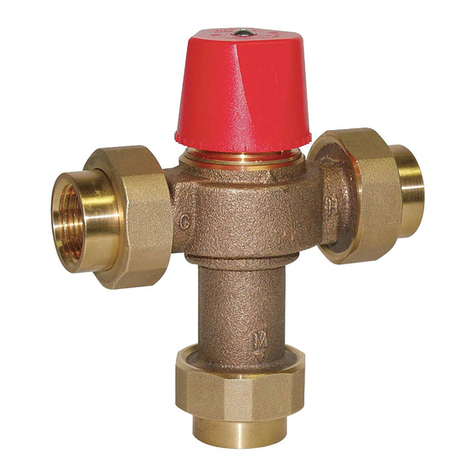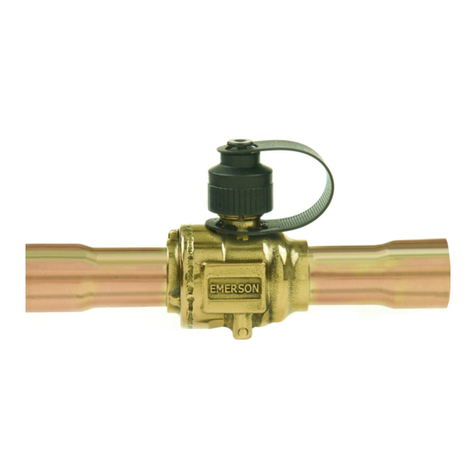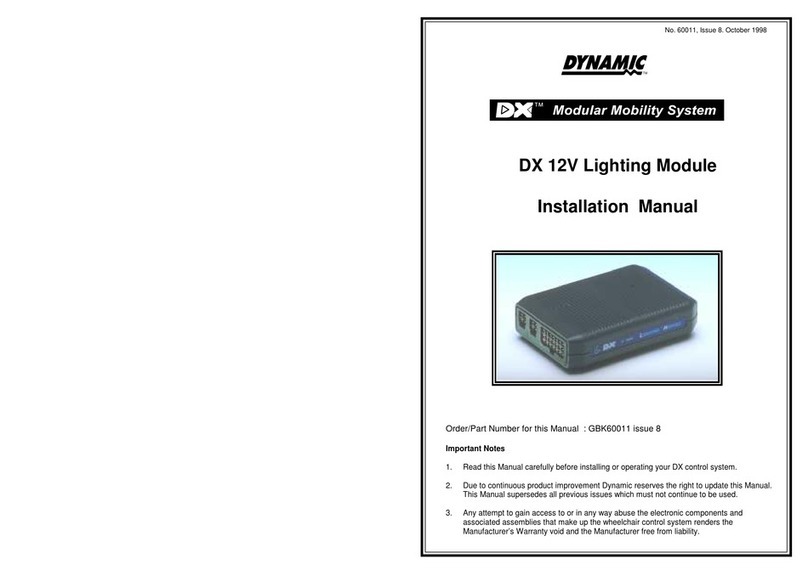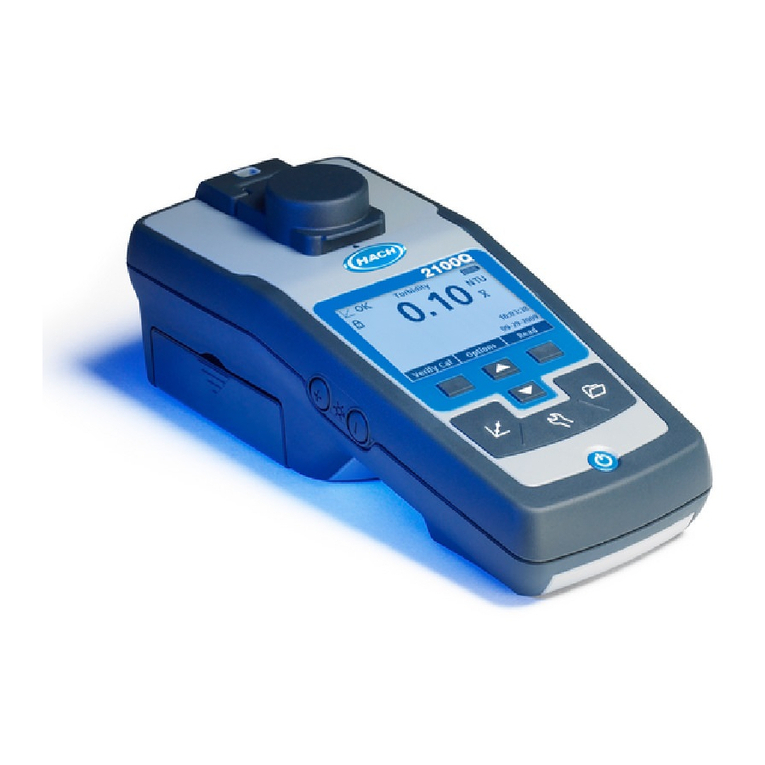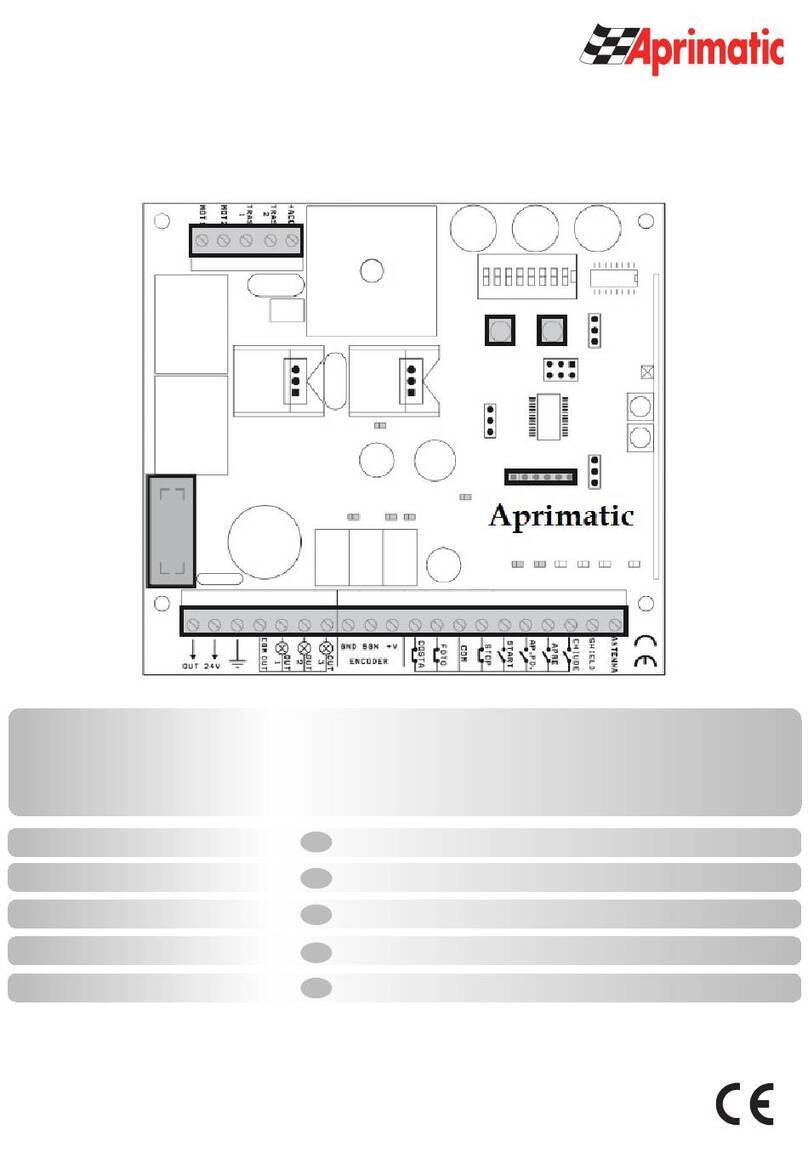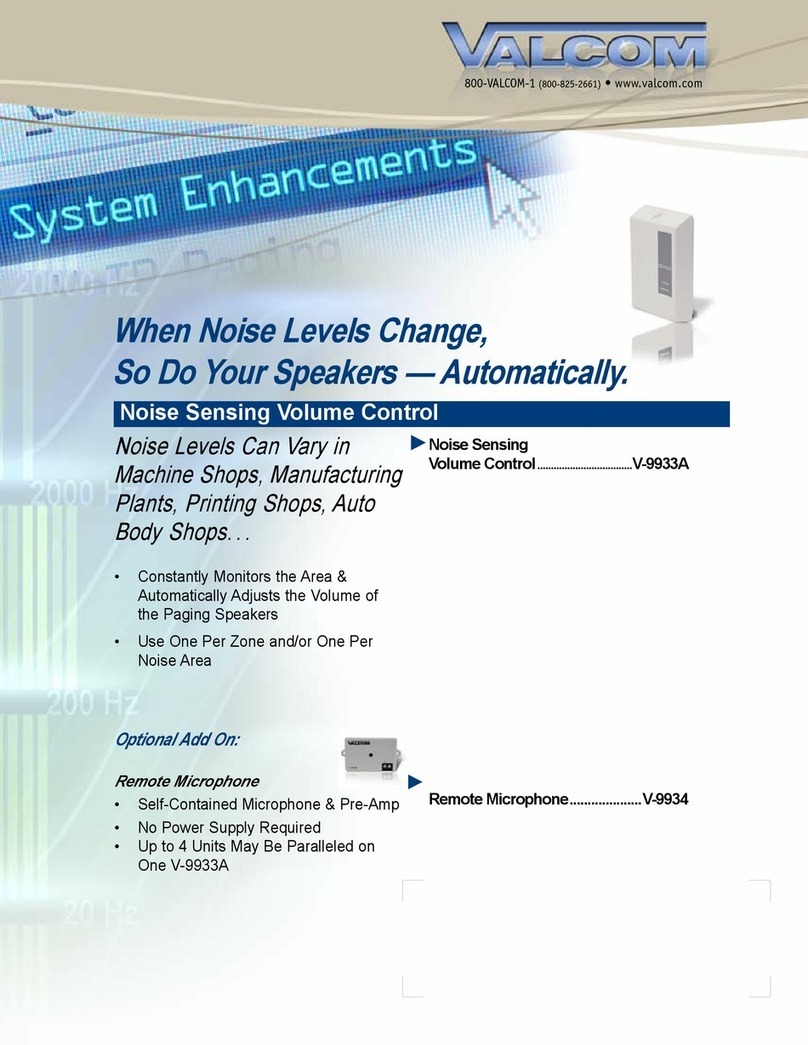Gemalto Cinterion ALAS5 User manual

GEMALTO.COM/M2M
Cinterion®ALAS5
Hardware Interface Description
Version: 00.030a
DocId: ALAS5_HIO_v00.030a

GENERAL NOTE
THE USE OF THE PRODUCT INCLUDING THE SOFTWARE AND DOCUMENTATION (THE "PROD-
UCT") IS SUBJECT TO THE RELEASE NOTE PROVIDED TOGETHER WITH PRODUCT. IN ANY
EVENT THE PROVISIONS OF THE RELEASE NOTE SHALL PREVAIL. THIS DOCUMENT CONTAINS
INFORMATION ON GEMALTO M2M PRODUCTS. THE SPECIFICATIONS IN THIS DOCUMENT ARE
SUBJECT TOCHANGEATGEMALTOM2M'SDISCRETION. GEMALTO M2M GMBH GRANTS A NON-
EXCLUSIVE RIGHT TO USE THE PRODUCT. THE RECIPIENT SHALL NOT TRANSFER, COPY,
MODIFY, TRANSLATE, REVERSE ENGINEER, CREATE DERIVATIVE WORKS; DISASSEMBLE OR
DECOMPILE THE PRODUCT OR OTHERWISE USE THE PRODUCT EXCEPT AS SPECIFICALLY
AUTHORIZED. THE PRODUCT AND THIS DOCUMENT ARE PROVIDED ON AN "AS IS" BASIS ONLY
AND MAY CONTAIN DEFICIENCIES OR INADEQUACIES. TO THE MAXIMUM EXTENT PERMITTED
BY APPLICABLE LAW, GEMALTO M2M GMBH DISCLAIMS ALL WARRANTIES AND LIABILITIES.
THE RECIPIENT UNDERTAKES FOR AN UNLIMITED PERIOD OF TIME TO OBSERVE SECRECY
REGARDING ANY INFORMATION AND DATA PROVIDED TO HIM IN THE CONTEXT OF THE DELIV-
ERY OF THE PRODUCT. THIS GENERAL NOTE SHALL BE GOVERNED AND CONSTRUED
ACCORDING TO GERMAN LAW.
Copyright
Transmittal, reproduction, dissemination and/or editing of this document as well as utilization of its con-
tents and communication thereof to others without express authorization are prohibited. Offenders will be
held liable for payment of damages. All rights created by patent grant or registration of a utility model or
design patent are reserved.
Copyright © 2019, Gemalto M2M GmbH, a Gemalto Company
Trademark Notice
Gemalto, the Gemalto logo, are trademarks and service marks of Gemalto and are registered in certain
countries. Microsoft and Windows are either registered trademarks or trademarks of Microsoft Corpora-
tion in the United States and/or other countries. All other registered trademarks or trademarks mentioned
in this document are property of their respective owners.
ALAS5_HIO_v00.030a 2019-04-01
Confidential / Preliminary
Cinterion®ALAS5 Hardware Interface Overview
2
Page 2 of 50
Document Name: Cinterion®ALAS5 Hardware Interface Overview
Version: 00.030a
Date: 2019-04-01
DocId: ALAS5_HIO_v00.030a
Status Confidential / Preliminary

Cinterion®ALAS5 Hardware Interface Overview
Contents
50
ALAS5_HIO_v00.030a 2019-04-01
Confidential / Preliminary
Page 3 of 50
Contents
1 Introduction.................................................................................................................7
1.1 Product Variants ................................................................................................7
1.2 Key Features at a Glance..................................................................................8
1.2.1 Supported Frequency Bands..............................................................12
1.2.2 Supported CA Configurations.............................................................13
1.3 ALAS5 System Overview.................................................................................15
2 Interface Characteristics..........................................................................................16
2.1 Application Interface ........................................................................................16
2.1.1 USB Interface......................................................................................16
2.1.2 Serial Interface ASC0 .........................................................................17
2.1.3 Serial Interface ASC1 .........................................................................18
2.1.4 Inter-Integrated Circuit Interface.........................................................19
2.1.5 UICC/SIM/USIM Interface...................................................................20
2.1.6 Digital Audio Interface.........................................................................22
2.1.6.1 Pulse Code Modulation Interface (PCM).............................22
2.1.6.2 Inter-IC Sound Interface......................................................22
2.1.7 Analog-to-Digital Converter (ADC)......................................................22
2.1.8 GPIO Interface....................................................................................22
2.1.9 eMMC Interface ..................................................................................22
2.2 GSM/UMTS/LTE Antenna Interface.................................................................23
2.2.1 Antenna Installation ............................................................................24
2.2.2 RF Line Routing Design......................................................................25
2.2.2.1 Line Arrangement Instructions ............................................25
2.2.2.2 Routing Examples...............................................................27
2.3 GNSS Antenna Interface .................................................................................28
2.4 Sample Application..........................................................................................30
3 GNSS Interface..........................................................................................................32
4 Mechanical Dimensions and Mounting...................................................................33
4.1 Mechanical Dimensions of ALAS5...................................................................33
5 Regulatory and Type Approval Information...........................................................35
5.1 Directives and Standards.................................................................................35
5.2 SAR requirements specific to portable mobiles ...............................................38
5.3 Reference Equipment for Type Approval.........................................................39
5.4 Compliance with FCC and ISED Rules and Regulations.................................40

Cinterion®ALAS5 Hardware Interface Overview
Contents
50
ALAS5_HIO_v00.030a 2019-04-01
Confidential / Preliminary
Page 4 of 50
6 Document Information..............................................................................................43
6.1 Revision History...............................................................................................43
6.2 Related Documents .........................................................................................44
6.3 Terms and Abbreviations.................................................................................44
6.4 Safety Precaution Notes..................................................................................47
7 Appendix....................................................................................................................48
7.1 List of Parts and Accessories...........................................................................48

Cinterion®ALAS5 Hardware Interface Overview
Tables
50
ALAS5_HIO_v00.030a 2019-04-01
Confidential / Preliminary
Page 5 of 50
Tables
Table 1: Supported frequency bands for each product variant.................................... 12
Table 2: Supported CA configurations......................................................................... 13
Table 3: Signals of the SIM interface (SMT application interface)............................... 20
Table 4: Return loss in the active band........................................................................ 23
Table 5: Directives ....................................................................................................... 35
Table 6: Standards of North American type approval.................................................. 35
Table 7: Standards of European type approval............................................................ 36
Table 8: Requirements of quality ................................................................................. 36
Table 9: Standards of the Ministry of Information Industry of the
People’s Republic of China............................................................................ 37
Table 10: Toxic or hazardous substances or elements with defined concentration
limits............................................................................................................... 37
Table 11: Antenna gain limits for FCC for ALAS5-W (TBD.).......................................... 40
Table 12: Antenna gain limits for FCC and ISED for ALAS5-AM (TBD.)....................... 41
Table 13: List of parts and accessories.......................................................................... 48
Table 14: Molex sales contacts (subject to change)...................................................... 49
Table 15: Hirose sales contacts (subject to change)..................................................... 49

Cinterion®ALAS5 Hardware Interface Overview
Figures
50
ALAS5_HIO_v00.030a 2019-04-01
Confidential / Preliminary
Page 6 of 50
Figures
Figure 1: ALAS5 system overview ................................................................................ 15
Figure 2: USB circuit ..................................................................................................... 16
Figure 3: Serial interface ASC0..................................................................................... 17
Figure 4: Serial interface ASC1..................................................................................... 18
Figure 5: I2C interface connected to VEXT ................................................................... 19
Figure 6: First UICC/SIM/USIM interface...................................................................... 21
Figure 7: Second UICC/SIM/USIM interface................................................................. 21
Figure 8: Embedded Stripline line arrangement............................................................ 25
Figure 9: Micro-Stripline line arrangement samples...................................................... 26
Figure 10: Routing to application‘s RF connector ........................................................... 27
Figure 11: Supply voltage for active GNSS antenna....................................................... 28
Figure 12: ESD protection for passive GNSS antenna................................................... 29
Figure 13: ALAS5 sample application............................................................................. 31
Figure 14: ALAS5 – top and bottom view........................................................................ 33
Figure 15: Dimensions of ALAS5 (all dimensions in mm)............................................... 34
Figure 16: Reference equipment for type approval......................................................... 39

Cinterion®ALAS5 Hardware Interface Overview
1 Introduction
15
ALAS5_HIO_v00.030a 2019-04-01
Confidential / Preliminary
Page 7 of 50
1 Introduction
This document1describes the hardware of the Cinterion®ALAS5 module. It helps you quickly
retrieve interface specifications, electrical and mechanical details and information on the re-
quirements to be considered for integrating further components.
1.1 Product Variants
This document applies to the following Gemalto M2M modules:
•Cinterion
®ALAS5-W
•Cinterion
®ALAS5-AM
Where necessary a note is made to differentiate between the various product variants and re-
leases.
1. The document is effective only if listed in the appropriate Release Notes as part of the technical docu-
mentation delivered with your Gemalto M2M product.

Cinterion®ALAS5 Hardware Interface Overview
1.2 Key Features at a Glance
15
ALAS5_HIO_v00.030a 2019-04-01
Confidential / Preliminary
Page 8 of 50
1.2 Key Features at a Glance
Feature Implementation
General
Frequency bands Note: Not all of the frequency bands (and 3GPP technologies) mentioned
throughout this document aresupported by every ALAS5 product variant.
Please refer to Section 1.2.1 for an overview of the frequency bands sup-
ported by each ALAS5 product variant.
GSM class Small MS
Output power
(according to Release 99) GSM/GPRS/UMTS:
Class 4 (+33dBm ±2dB) for EGSM850 and EGSM900
Class 1 (+30dBm ±2dB) for GSM1800 and GSM1900
Class E2 (+27dBm ± 3dB) for GSM 850 8-PSK and GSM 900 8-PSK
Class E2 (+26dBm +3 /-4dB) for GSM 1800 8-PSK and GSM 1900 8-PSK
Class 3 (+24dBm +1/-3dB) for all supported WCDMA FDD bands
Output power
(according to Release 4) TD-SCDMA:
Class 2 (+24dBm +1/-3dB) for TD-SCDMA 1900 (Bd39) and TD-SCDMA
2000 (Bd34)
Output power
(according to Release 8) LTE (FDD):
Class 3 (+23dBm ±2dB) for all supported LTE FDD bands
LTE (TDD):
Class 3 (+23dBm ±2dB) for all supported LTE TDD bands
Power supply 3.3V < VBATT+ <4.2V
Operating temperature
(board temperature) Normal operation: -30°C to +85°C
Restricted operation: -40°C to +95°C
Physical Dimensions: 40mm x 36mm x 3mm
Weight: 8.8g
RoHS All hardware components fully compliant with EU RoHS Directive
LTE features
3GPP Release 13 Down- and Uplink carrier aggregation (CA) to increase bandwidth, and
thereby increase bitrate:
• Maximum aggregated bandwidth: 80MHz
• Maximum number of component carriers: 2
• Inter-band FDD
• Intra-band FDD, TDD, contiguous, non-contiguous
• Supported inter- and intra-band CA configurations: See Section 1.2.2
CAT 6 supported
DL 300Mbps, UL 50Mbps
2x2 MIMO in DL direction
HSPA features
3GPP Release 8 UE CAT. 14, 24
DC-HSPA+ – DL 42Mbps
HSUPA – UL 5.76Mbps
Compressed mode (CM) supported according to 3GPP TS25.212

Cinterion®ALAS5 Hardware Interface Overview
1.2 Key Features at a Glance
15
ALAS5_HIO_v00.030a 2019-04-01
Confidential / Preliminary
Page 9 of 50
UMTS features
3GPP Release 8 PS data rate – 384 kbps DL / 384 kbps UL
TD-SCDMA features
3GPP Release 4 2.8 Mbps DL / 2.2Mbps UL
GSM / GPRS / EGPRS features
Data transfer GPRS:
• Multislot Class 12
• Mobile Station Class B
• Coding Scheme 1 – 4
EGPRS:
• Multislot Class 12
• EDGE E2 power class for 8 PSK
• Downlink coding schemes – CS 1-4, MCS 1-9
• Uplink coding schemes – CS 1-4, MCS 1-9
• SRB loopback and test mode B
• 8-bit, 11-bit RACH
• 1 phase/2 phase access procedures
• Link adaptation and IR
• NACC, extended UL TBF
• Mobile Station Class B
SMS Point-to-point MT and MO, Cell broadcast,
Text and PDU mode
Software
AT commands Hayes, 3GPP TS 27.007 and 27.005, and proprietary Gemalto M2M com-
mands
Embedded Linux platform Embedded Linux with API (ARC, RIL).
Memory space available for Linux applications is 4GB in the flash file sys-
tem, and 2GB RAM.
SIM Application Toolkit SAT Release 99, letter classes b, c, e with BIP and RunAT support
Firmware update Firmware update supported
GNSS Features
Protocol NMEA
Modes Standalone GNSS (GPS, GLONASS, Beidou, Galileo)
Integrated gpsOne 9HT support (GPS, GLONASS, Beidou, Galileo)
QZSS and SBAS support
General Power saving modes
DC feed bridge and control of power supply for active antenna via GPIO
Feature Implementation

Cinterion®ALAS5 Hardware Interface Overview
1.2 Key Features at a Glance
15
ALAS5_HIO_v00.030a 2019-04-01
Confidential / Preliminary
Page 10 of 50
Interfaces
Module interface Surface mount device with solderable connection pads (SMT application
interface).
Land grid array (LGA) technology ensures high solder joint reliability and
provides the possibility to use an optional module mounting socket.
For more information on how to integrate SMT modules see also [3]. This
application note comprises chapters on module mounting and application
layout issues as well as on additional SMT application development equip-
ment.
Antenna 50. GSM/UMTS/LTE main antenna, LTE Diversity/MIMO antenna,
(active/passive) GNSS antenna
USB USB 2.0 High Speed (480Mbit/s) device interface or
USB 3.0 Super Speed (5Gbit/s) device interface
Serial interface ASC0:
• 8-wire (plus GND line) interface unbalanced, asynchronous
• Fixed baud rates from 115,200 to 921,600bps
• Supports RTS0/CTS0 hardware flow control
Linux controlled only:
ASC1:
• 4-wire, unbalanced asynchronous interface
• Fixed baud rates: 115,200bps to 921,60bps
• Supports RTS1/CTS1 hardware flow control
ASC2:
2-wire, unbalanced asynchronousinterface at RXD2 and TXD2 lines used
for tracing and debugging purposes (optional)
UICC interface 2 UICC interfaces (switchable)
Supported chip cards: UICC/SIM/USIM 2.85V, 1.8V
I2C interface 1 I2C interface
Audio 2 digital interfaces (I2S) - first DAI reserved for future use
Power on/off, Reset
Power on/off Switch-on by hardware signal IGT
Switch-off by AT command (AT^SMSO) or IGT (option)
Automatic switch-off in case of critical temperature or voltage conditions
Reset Orderly shutdown and reset by AT command
Emergency-off Emergency-off by hardware signal EMERG_OFF
Special Features
Antenna SAIC (Single Antenna Interference Cancellation) / DARP (Downlink
Advanced Receiver Performance)
Rx Diversity (receiver type 3i - 64-QAM) / MIMO
GPIO 15 I/O pins of the application interface programmable as GPIO.
GPIO1 can be configured as dead reckoning synchronization signal.
Programming can be done via AT commands.
Emergency call handling
(not for -US variant) EU eCall 3GPP Release 10 compliant (modem)
ERA compliant (modem and GNSS)
ADC inputs Analog-to-Digital Converter with four unbalanced analog inputs for (exter-
nal) antenna diagnosis
JTAG JTAG interface for debug purposes
Feature Implementation

Cinterion®ALAS5 Hardware Interface Overview
1.2 Key Features at a Glance
15
ALAS5_HIO_v00.030a 2019-04-01
Confidential / Preliminary
Page 11 of 50
eMMC Linux controlled:
Embedded Multi-Media Card interface
PCIe Linux controlled:
PCIe interface
Evaluation kit
Evaluation module ALAS5 module soldered onto a dedicated PCB.
Feature Implementation

Cinterion®ALAS5 Hardware Interface Overview
1.2 Key Features at a Glance
15
ALAS5_HIO_v00.030a 2019-04-01
Confidential / Preliminary
Page 12 of 50
1.2.1 Supported Frequency Bands
The following table lists the supported frequency bands foreach of the ALAS5 product variants
mentioned in Section 1.1. Supported CA configurations can be found in Section 1.2.2.
Table 1: Supported frequency bands for each product variant
Band ALAS5-W ALAS5-AM
GSM/GPRS/EDGE
850MHz x x
900MHz x x
1800MHz x x
1900MHz x x
UMTS/HSPA
Bd.I (2100MHz) x
Bd.II (1900MHz) x
Bd.III (1800MHz) x
Bd.IV (1700MHz) x
Bd.V (850MHz) x x
Bd.VI (850MHz) x
Bd.VIII (900MHz) x
Bd.XIX (850MHz) x
TD-SCDMA
Bd.34 (2000MHz) x
Bd.39 (1900MHz) x
LTE-FDD
Bd.1 (2100MHz) x
Bd.2 (1900MHz) x
Bd.3 (1800MHz) x
Bd.4 (1700MHz) x
Bd.5 (850MHz) x x
Bd.7 (2600MHz) x x
Bd.8 (900MHz) x
Bd.12 (700MHz) x
Bd.13 (750MHz) x
Bd.18 (850MHz) x
Bd.19 (850MHz) x
Bd.20 (800MHz) x
Bd.26 (850MHz) x
Bd.28 (700MHz) x x

Cinterion®ALAS5 Hardware Interface Overview
1.2 Key Features at a Glance
15
ALAS5_HIO_v00.030a 2019-04-01
Confidential / Preliminary
Page 13 of 50
1.2.2 Supported CA Configurations
The following table lists the supported CA configurations (aka supported band combinations)
for each of the ALAS5 product variants mentioned in Section 1.1.
Bd.29 (700MHz)
<supplementary downlink> x
Bd.30 (2300MHZ)
<supplementary downlink> x
Bd.32 (1500MHz)
<supplementary downlink> x
Bd.66 (1700MHz) x
LTE-TDD
Bd.34 (2000MHz) x
Bd.38 (2600MHz) x
Bd.39 (1900MHz) x
Bd.40 (2300MHz) x
Bd.41 (2600MHz)1x
1. Note: Out of the 3GPP specified frequency range for LTE Band 41,
only that part which is used in China and Japan (2545MHz to
2655MHz) is supported by ALAS5.
Table 2: Supported CA configurations
Downlink CA Bandwidth
combination set Product variant
(ALAS5-...)
Intra-band continuous
CA_1C 0, 1 W
CA_3C 0 W
CA_5B 0, 1 AM, W
CA_7B 0 AM, W
CA_7C 0, 1, 2 AM, W
CA_8B 0 W
CA_38C 0 W
CA_39C 0 W
CA_40C 0, 1 W
CA_41C 0, 1, 2, 3 W
Intra-band non-continuous
CA_3A-3A 0, 1, 2 W
CA_7A-7A 0, 1, 2, 3 AM, W
CA_40A-40A 0, 1 W
Table 1: Supported frequency bands for each product variant
Band ALAS5-W ALAS5-AM

Cinterion®ALAS5 Hardware Interface Overview
1.2 Key Features at a Glance
15
ALAS5_HIO_v00.030a 2019-04-01
Confidential / Preliminary
Page 14 of 50
CA_41A-41A 0, 1 W
Inter-band (two bands)
CA_1A-5A 0, 1 W
CA_1A-8A 0, 1, 2 W
CA_1A-18A 0, 1 W
CA_1A-19A 0 W
CA_1A-20A 0 W
CA_1A-26A 0, 1 W
CA_1A-28A 0, 1 W
CA_2A-13A 0, 1 AM
CA_3A-5A 0, 1, 2, 3,4 W
CA_3A-8A 0, 1, 2, 3 W
CA_3A-19A 0 W
CA_3A-20A 0, 1 W
CA_3A-26A 0, 1 W
CA_3A-28A 0, 1 W
CA_4A-13A 0, 1 AM
CA_5A-7A 0, 1 AM, W
CA_5A-40A 0, 1 W
CA_7A-8A 0, 1, 2 W
CA_7A-20A 0, 1 W
CA_7A-28A 0, 1 AM, W
CA_7B-28A 0 AM, W
CA_8A-40A 0, 1 W
CA_8A-41A 0, 1 W
CA_13A-66A 0 AM
CA_13A-66B 0 AM
CA_20A-38A 0 W
CA_20A-40A 0 W
CA_26A-41A 0 W
CA_28A-40A 0 W
CA_28A-41A 0, 1 W
Table 2: Supported CA configurations
Downlink CA Bandwidth
combination set Product variant
(ALAS5-...)

Cinterion®ALAS5 Hardware Interface Overview
1.3 ALAS5 System Overview
15
ALAS5_HIO_v00.030a 2019-04-01
Confidential / Preliminary
Page 15 of 50
1.3 ALAS5 System Overview
Figure 1: ALAS5 system overview
Power
Supply
IGT
EMERG_OFF
Application Interfaces
ALAS5
Application
VEXT
PWR_IND
GNSS
Application
UICC
SIM
Card
GSM/UMTS/LTE GPIO
Antenna-
diagnostic
2 x
ADC
I2C
USB
2.0/3.0 I2C 2x
Digital
Audio GPIO
PCM/I2S
USB
Antenna-
diagnostic
ANT_MAIN ANT_DRX_MIMOGNSS
GPIO
Power
Supply
eMMC
eMMC Interface
Power
Supply
PCIe
PCIe
Serial Interface
ASC0
Serial Interface
ASC1
SIM
Card

Cinterion®ALAS5 Hardware Interface Overview
2 Interface Characteristics
32
ALAS5_HIO_v00.030a 2019-04-01
Confidential / Preliminary
Page 16 of 50
2 Interface Characteristics
ALAS5 is equipped with an SMT application interface that connects to the external application.
The SMT application interface incorporates the various application interfaces as well as the RF
antenna interface.
2.1 Application Interface
2.1.1 USB Interface
ALAS5 supports a USB3.0 Super Speed (5Gbps) deviceinterface, and alternatively a USB 2.0
device interface that is High Speed compatible. The USB interface is primarily intended for use
as command and data interface, and for downloading firmware.
The USB host is responsible for supplying the VUSB_IN line. This line is for voltage detection
only. The USB part (driver and transceiver) is supplied by means of BATT+. This is because
ALAS5 is designed as a self-powered device compliant with the “Universal Serial Bus Specifi-
cation Revision 3.0”1.
Figure 2: USB circuit
To properly connect the module's USB interface to the external application, a USB 3.0 or 2.0
compatible connector and cable or hardwaredesign is required. Furthermore, the USB modem
driver distributed with ALAS5 needs to be installed.
1. The specification is ready for download on http://www.usb.org/developers/docs/
BATT+
USB_DPc)
lin. reg. GND
Module
Detection only VUSB_INb)
USB parta)
a) All serial (including RS) and pull-up resistors for data lines are implemented .
USB_DNc)
c) If the USB interface is operated with super or high speeds, it is recommended to take special care routing the data
lines. Application layout should implement a differential impedance of 90 ohms for proper signal integrity .
VBUS 1µF
b) Since VUSB_IN is used for detection only it is recommended not to add any further blocking capacitors on
the VUSB_IN line.
USB_SSRX_Nc)
USB_SSRX_Pc)
USB_SSTX_Nc)
USB_SSTX_Pc)
USB_SS
_PHY
USB_HS
_PHY
USB2.0
Controller
USB3.0
Controller
2.0
2.0
3.0 100nF
100nF
SMT

Cinterion®ALAS5 Hardware Interface Overview
2.1 Application Interface
32
ALAS5_HIO_v00.030a 2019-04-01
Confidential / Preliminary
Page 17 of 50
2.1.2 Serial Interface ASC0
ALAS5 offers an 8-wire (plus GND) unbalanced, asynchronous modem interface ASC0 con-
forming to ITU-T V.24 protocol DCE signaling. The electrical characteristics do not comply with
ITU-TV.28. The significantlevels are 0V(for low databit oractivestate) and1.8V(for highdata
bit or inactive state).
ALAS5 is designed for use as a DCE. Based on the conventions for DCE-DTE connections it
communicates with the customer application (DTE) using the following signals:
• Port TXD @ application sends data to the module’s TXD0 signal line
• Port RXD @ application receives data from the module’s RXD0 signal line
Figure 3: Serial interface ASC0
Features:
• Includes the data lines TXD0 and RXD0, the status lines RTS0 and CTS0, and the modem
control lines DTR0, DSR0, DCD0 and RING0.
• Configured for 8 data bits, no parity and 1 stop bit.
• ASC0 can be operated at fixed bit rates from 115,200 to 921,600bps.
• Supports RTS0/CTS0 hardware flow control.
Note: If the ASC0 serial interface is the application’s only interface, it is suggested to connect
test points on the USB signal lines as a potential tracing possibility.

Cinterion®ALAS5 Hardware Interface Overview
2.1 Application Interface
32
ALAS5_HIO_v00.030a 2019-04-01
Confidential / Preliminary
Page 18 of 50
2.1.3 Serial Interface ASC1
ALAS5 provides a 4-wire unbalanced, asynchronous modem interface ASC1 conforming to
ITU-T V.24 protocol DCE signaling. The electrical characteristics do not comply with ITU-T
V.28. The significant levels are 0V (for low data bit or active state) and 1.8V (for high data bit
or inactive state).
ALAS5 is designed for use as a DCE. Based on the conventions for DCE-DTE connections it
communicates with the customer application (DTE) using the following signals:
• Port TXD @ application sends data to module’s TXD1 signal line
• Port RXD @ application receives data from the module’s RXD1 signal line
Figure 4: Serial interface ASC1
Features
• Includes only the data lines TXD1 and RXD1 plus RTS1 and CTS1 for hardware hand-
shake.
• On ASC1 no RING line is available.
• Configured for 8 data bits, no parity and 1 or 2 stop bits.
• ASC1 can be operated at fixed bit rates from 115,200 bps to 921,600 bps.
• Supports RTS1/CTS1 hardware flow.
• Linux controlled only.

Cinterion®ALAS5 Hardware Interface Overview
2.1 Application Interface
32
ALAS5_HIO_v00.030a 2019-04-01
Confidential / Preliminary
Page 19 of 50
2.1.4 Inter-Integrated Circuit Interface
ALAS5 provides an Inter-Integrated Circuit (I2C) interface. I2C is a serial, 8-bit oriented data
transfer bus for bit rates up to 400kbps in Fast mode. It consists of two lines, the serialdata line
I2CDAT and the serial clock line I2CCLK. The module acts as a single master device, e.g. the
clock I2CCLK is driven by the module. I2CDAT is a bi-directional line. Each device connected
to the bus is software addressable by a unique 7-bit address, and simple master/slave relation-
ships exist at all times. The module operates as master-transmitter or as master-receiver. The
customer application transmits or receives data only on request of the module.
The applications’ I2C interface can be powered via the VEXT line of ALAS5. If connected to the
VEXT line, the I2C interface will properly shut down when the module enters the Power Down
mode.
In the application I2CDAT and I2CCLK lines need to be connected to a positive supply voltage
(e.g., VEXT) via a pull-up resistor.
Figure 5: I2C interface connected to VEXT
Note: Good care should be taken when creating the PCB layout of the host application: The
traces of I2CCLK and I2CDAT should be equal in length and as short as possible.
I2CCLK
I2CDAT
GND
I2CCLK
I2CDAT
GND
Module Application
VEXT
R pull up
R pull up

Cinterion®ALAS5 Hardware Interface Overview
2.1 Application Interface
32
ALAS5_HIO_v00.030a 2019-04-01
Confidential / Preliminary
Page 20 of 50
2.1.5 UICC/SIM/USIM Interface
ALAS5 has two UICC/SIM/USIM interfaces compatible with the 3GPP 31.102 and ETSI 102
221. These are wired to the host interface in order to be connected to an external SIM card
holder. Five pads on the SMT application interface are reserved for each of the two SIM inter-
faces.
The UICC/SIM/USIM interface supports 2.85V and 1.8V SIM cards.
The CCINx signal serves to detect whether a tray (with SIM card) is present in the card holder.
Using the CCINx signal is mandatory for compliance with the GSM 11.11 recommendation if
the mechanical design of the host application allows the user to remove the SIM card during
operation. To take advantage of this feature, an appropriate SIM card detect switch is required
on the card holder. For example, this is true for the model supplied by Molex, which has been
tested to operate with ALAS5 and is part of the Gemalto M2M reference equipment submitted
for type approval. See Chapter 7 for Molex ordering numbers.
Note: No guarantee can be given, nor any liability accepted, if loss of data is encountered after
removing the SIM card during operation. Also, no guarantee can be given for properly initializ-
ing any SIM card that the user inserts after having removed the SIM card during operation. In
this case, the application must restart ALAS5.
Table 3: Signals of the SIM interface (SMT application interface)
Signal Description
GND Ground connection for SIM interfaces. Optionally a separate SIM ground line may be used
to improve EMC.
CCCLK1
CCCLK2 Chipcard clock line for 1st and 2nd SIM interface.
CCVCC1
CCVCC2 SIM supply voltage line for 1st and 2nd SIM interface.
CCIO1
CCIO2 Serial data line for 1st and 2nd SIM interface, input and output.
CCRST1
CCRST2 Chipcard reset line for 1st and 2nd SIM interface.
CCIN1
CCIN2 Input on the baseband processor for detecting a SIM card tray in the holder. If the SIM is
removed during operation the SIM interface is shut down immediately to prevent destruc-
tion of the SIM. The CCINx signal is active low.
The CCINx signal is mandatory for applications that allow the user to remove the SIM card
during operation.
The CCINx signal is solely intended for use with a SIM card. It must not be used for any
other purposes. Failureto comply with this requirement may invalidate the type approval of
ALAS5.
Table of contents
Other Gemalto Control Unit manuals
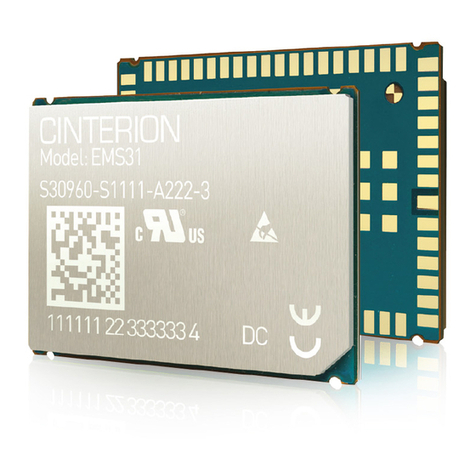
Gemalto
Gemalto Cinterion EMS31 User manual
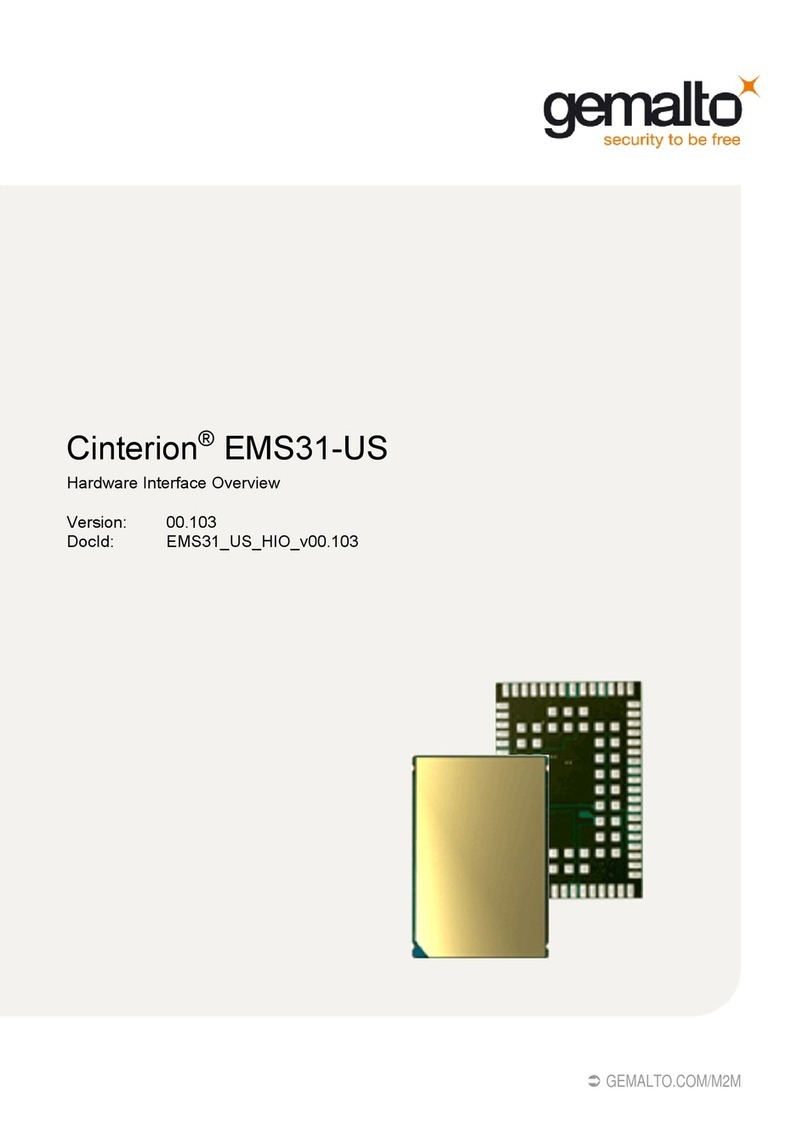
Gemalto
Gemalto Cinterion EMS31-US Installation guide
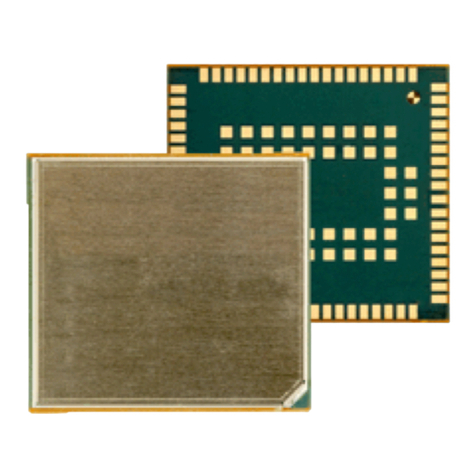
Gemalto
Gemalto Cinterion EHS6 Installation instructions
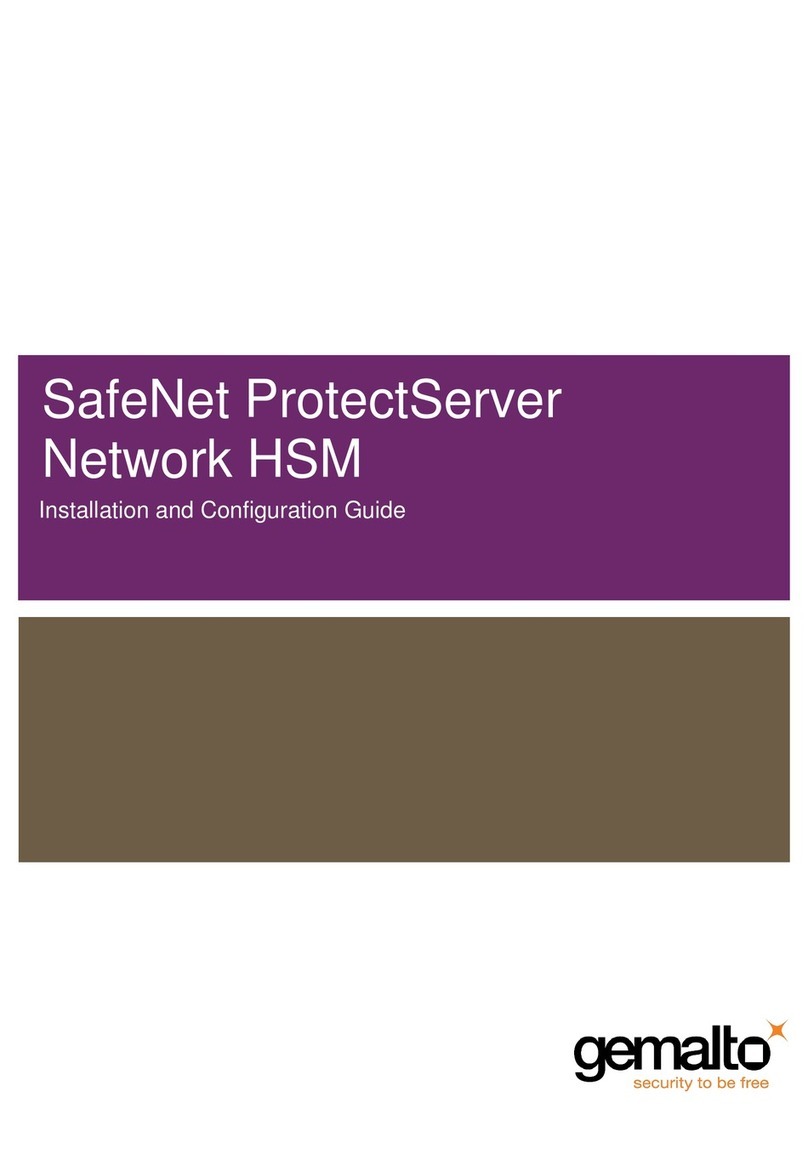
Gemalto
Gemalto SafeNet ProtectServer Operator's manual
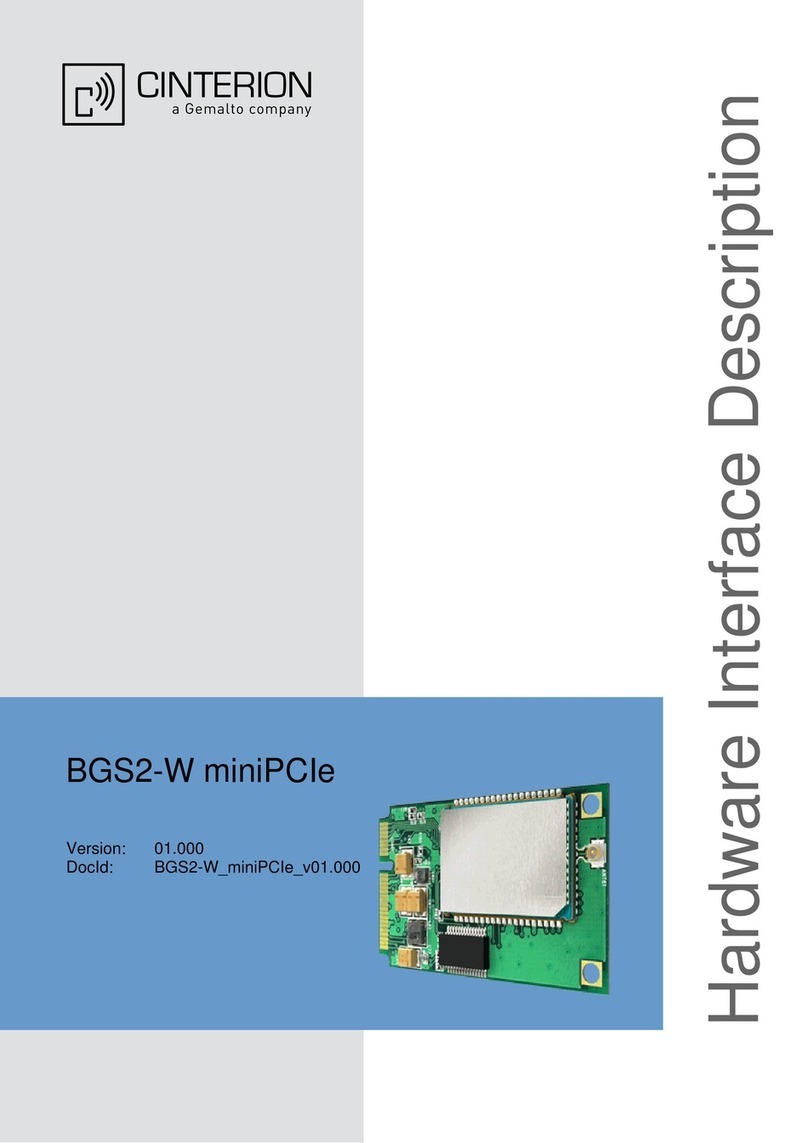
Gemalto
Gemalto Cinterion BGS2-W miniPCIe User manual
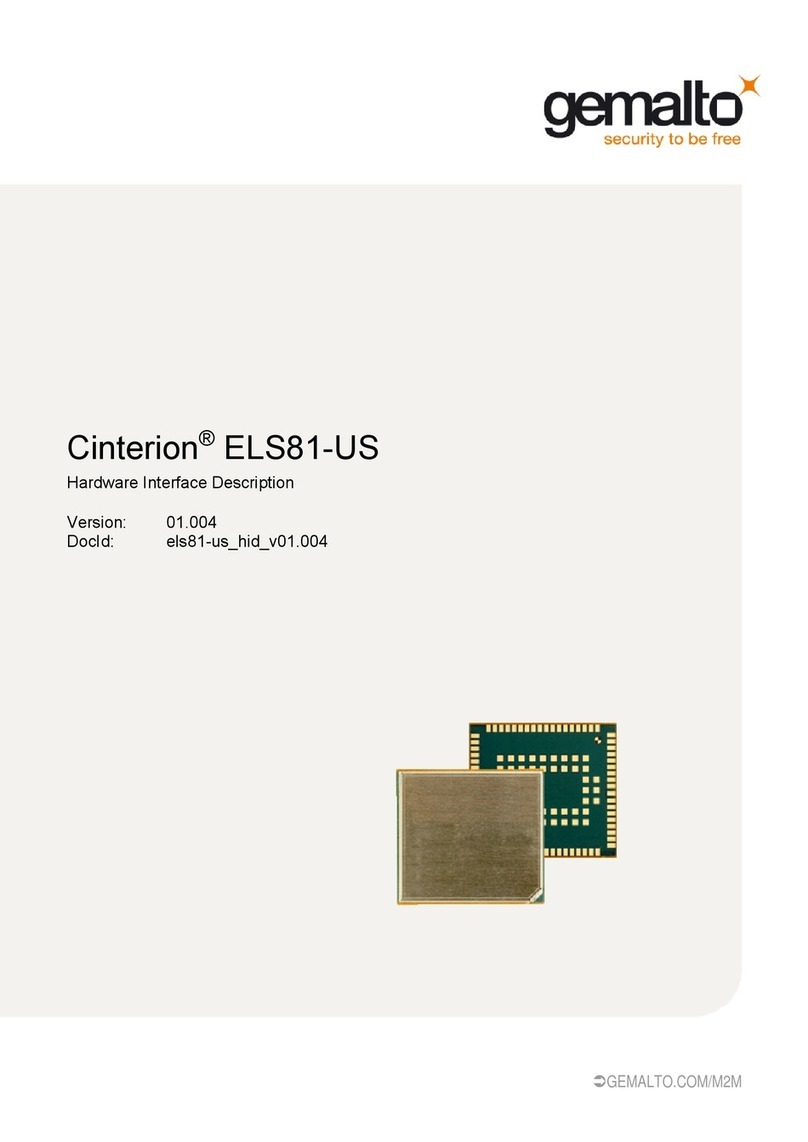
Gemalto
Gemalto Cinterion ELS81-US User manual
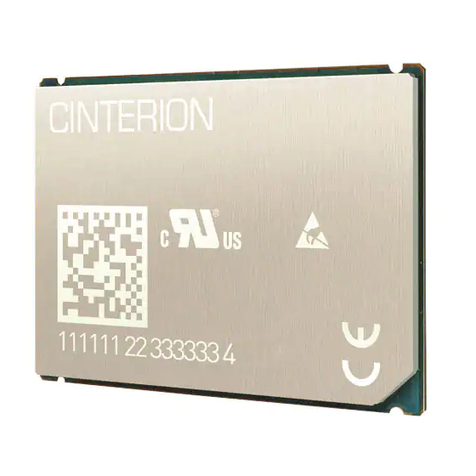
Gemalto
Gemalto Cinterion EMS31-V Installation guide
